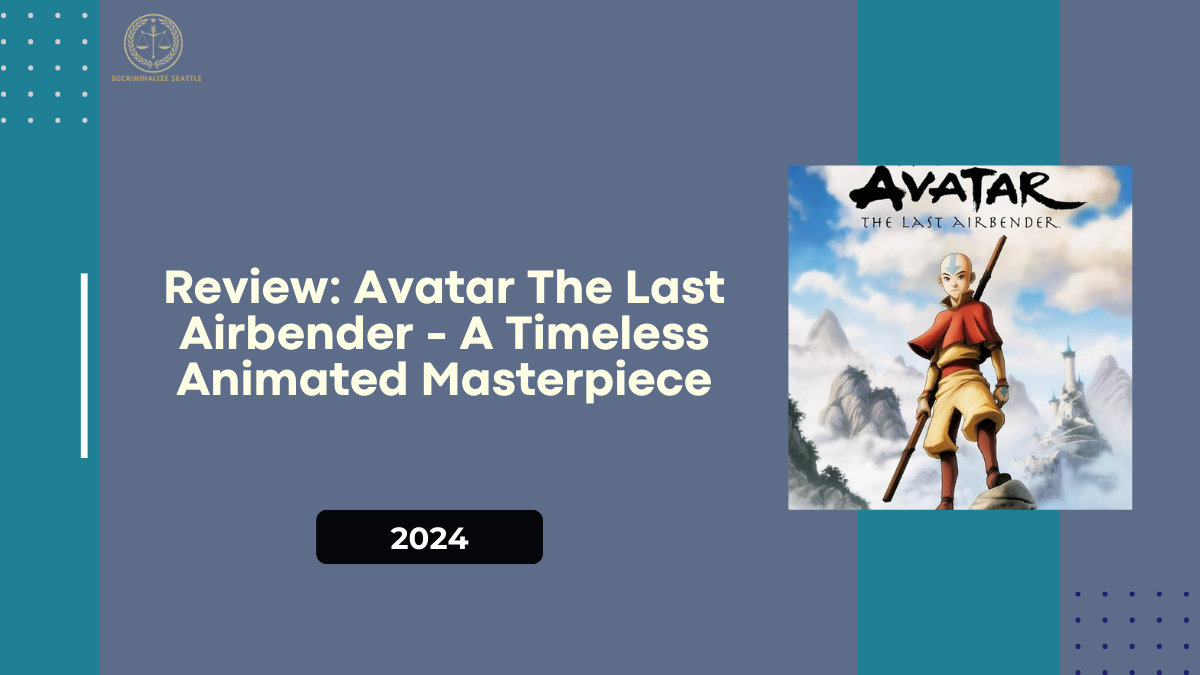“Avatar: The Last Airbender” (ATLA) is one of the most beloved animated series of all time. Created by Michael Dante DiMartino and Bryan Konietzko, the show originally aired on Nickelodeon between 2005 and 2008, and it has since captured the hearts of audiences worldwide. With its rich world-building, complex characters, and themes that resonate with all ages, it transcended the typical constraints of children’s animation.
Even years after its release, “Avatar: The Last Airbender” continues to be hailed as a masterpiece that appeals to both younger viewers and adults alike. In this review, we’ll dive into what makes this show so unique, exploring its compelling story, well-developed characters, breathtaking animation, and the themes that elevate it above many of its peers.

A Captivating Storyline
At its core, Avatar: The Last Airbender is an epic tale set in a world where people can manipulate (or “bend”) the elements: water, earth, fire, and air. The story follows Aang, the last surviving Airbender, and the current Avatar, a being capable of bending all four elements and being tasked with maintaining balance in the world. Aang must stop Fire Lord Ozai and the Fire Nation from conquering the other nations, restoring peace and balance to the world.
While the plot may sound straightforward, the series masterfully blends a coming-of-age adventure with deep, morally nuanced storylines. Each season, or “Book,” tackles not just the physical battles but also emotional and ethical dilemmas, giving the show a depth rarely seen in children’s programming. For example, Aang’s internal struggle between his pacifist Air Nomad upbringing and his role as the Avatar, which requires him to confront violence and power, creates tension throughout the series.
The pacing of the story is carefully crafted, with each episode contributing to the larger narrative arc while also standing firm on its own. The creators managed to weave together light-hearted, humorous moments with intense emotional scenes, all without losing the audience’s engagement. The stakes consistently rise, leading to an exhilarating and emotionally charged finale that is as satisfying as it is heart-wrenching.
Characters That Stay With You
One of the show’s greatest strengths is its memorable and multidimensional cast of characters.
Aang, the cheerful and innocent Avatar, initially shuns his responsibility, burdened by the overwhelming task ahead. However, over the course of the series, he grows into an influential, wise leader, all while maintaining his kind-hearted nature. His journey is not just about mastering the elements but also about understanding what kind of Avatar—and person—he wants to be.
Then there’s Katara, a waterbender from the Southern Water Tribe, who is fiercely determined and compassionate. Katara’s arc is a compelling mix of personal growth and mastery of her bending skills, evolving from an amateur bender to one of the most formidable waterbenders in the world.
Sokka, Katara’s brother, is often the comic relief, but he’s far more than just a source of humour. He is the strategist and the heart of the group, offering insights and leadership despite not having any bending abilities. His development from a brash warrior-in-training to a mature, reliable protector is advantageous to watch.
Perhaps the most complex character in the show is Zuko, the exiled prince of the Fire Nation. His journey of redemption is one of the most compelling in television history. At the beginning of the series, Zuko is consumed by the need to restore his honour by capturing the Avatar. However, through numerous trials, he begins to question his beliefs and the nature of honour itself. His transformation from antagonist to ally is one of the show’s most profound arcs.
Even secondary characters like Toph, the blind Earthbender with incredible strength and wit, and Iroh, Zuko’s wise and kind-hearted uncle, are fleshed out with rich backstories and complex personalities. Each character’s growth feels natural, and they all face challenges that mirror real-life issues, from self-doubt and trauma to love and loss.
Stunning Animation and World-Building
“Avatar: The Last Airbender” also stands out for its stunning animation and meticulous world-building. Each of the four nations is distinct, with its own culture, architecture, and bending style, influenced by various real-world cultures and martial arts. For example, Waterbending draws inspiration from Tai Chi, while Firebending reflects movements from Northern Shaolin Kung Fu. The creators clearly put a great deal of thought into making the world feel lived-in and authentic.
The animation itself is beautiful, especially in its action sequences. The bending battles are visually breathtaking, with fluid, dynamic movements that make each fight feel unique. The attention to detail extends beyond just the bending styles; landscapes, character designs, and even clothing reflect the diverse cultures in this richly imagined world.
Themes That Transcend Age
One of the reasons Avatar: The Last Airbender resonates so strongly with viewers of all ages is its mature handling of complex themes. The show doesn’t shy away from addressing topics like war, genocide, imperialism, and identity, yet it presents them in a way that is accessible and understandable for younger audiences without being overly simplistic.
Aang’s struggle with non-violence in the face of overwhelming evil is a particularly poignant theme. Throughout the series, Aang wrestles with the idea of taking a life, even if it’s someone as dangerous as Fire Lord Ozai. This moral dilemma gives the series a weight that many other animated shows lack.
Beyond Aang’s journey, the show addresses personal growth, forgiveness, and the search for identity. Zuko’s redemption arc, for instance, offers valuable lessons about the importance of self-reflection and change. These themes elevate Avatar: The Last Airbender beyond a typical children’s show, making it a profound narrative that appeals to all ages.
Conclusion
In conclusion, Avatar: The Last Airbender remains a timeless work of animated storytelling that has earned its place as a modern classic. With its well-rounded characters, gripping storylines, breathtaking animation, and deep themes, it continues to capture the imaginations of viewers across generations. Whether you’re watching it for the first time or revisiting it years later, the series is a rewarding experience that offers something new with each viewing.
For anyone seeking an animated show that goes beyond mere entertainment, “Avatar: The Last Airbender” is an absolute must-watch. It’s more than just a children’s show—it’s a beautifully crafted epic that will resonate with anyone who appreciates good storytelling.
Click here to know more.

Arvind is an avid automobile enthusiast who is passionate about all things on wheels. From the latest car models to classic vintage rides, I love exploring the automotive world’s intricate details and engineering marvels. With years of experience in test-driving, reviewing, and analyzing cars, I provide readers with comprehensive insights and honest opinions.